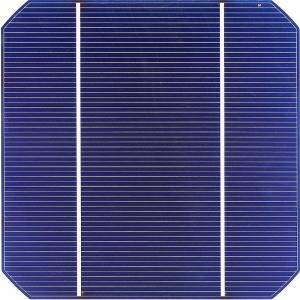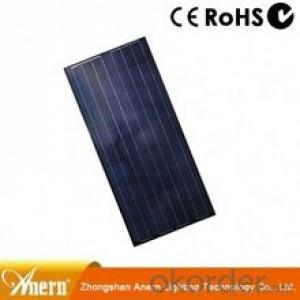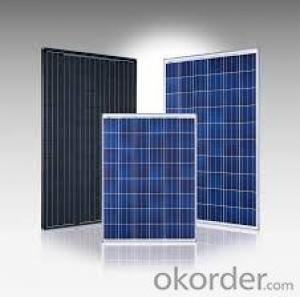Monocrystalline Silicon Solar Cell Type CSUN-S156-3BB-88
- Loading Port:
- China Main Port
- Payment Terms:
- TT or LC
- Min Order Qty:
- 5000 pc
- Supply Capability:
- -
OKorder Service Pledge
OKorder Financial Service
You Might Also Like
1. Structure of Monocrystalline Silicon solar cell type CSUN-S156-3BB-88
A solar cell, is an electrical device that converts the energy of light directly into electricity by the photovoltaic effect, which is a physical and chemical phenomenon. It is a form of photoelectric cell, defined as a device whose electrical characteristics, such as current, voltage, or resistance, vary when exposed to light. Solar cells are the building blocks of photovoltaic modules, otherwise known as solar panels.
2. Main Features of Monocrystalline Silicon Solar Cell type CSUN-S156-3BB-88
★Color uniformity
★High peel strength
★Tighter product performance distribution and 0.1% efficiency step reduce the mismatch power loss during module assembly
★Good module reliability
★Excellent PID-free performance
★Low revrse leakage current
3. Monocrystalline Silicon Solar Cell type CSUN-S156-3BB-88 Specifications
Format : 156 mm × 156 mm ± 0.5 mm
Thickness: 200 μm ±20 μm
Front (-) : 1.35mm bus bars (silver),blue anti-reflection coating (silicon nitride)
Back (+) : 1.8mm wide soldering pads (silver) back surface field (aluminium)

4. Monocrystalline Silicon Solar Cell type CSUN-S156-3BB-88 Images

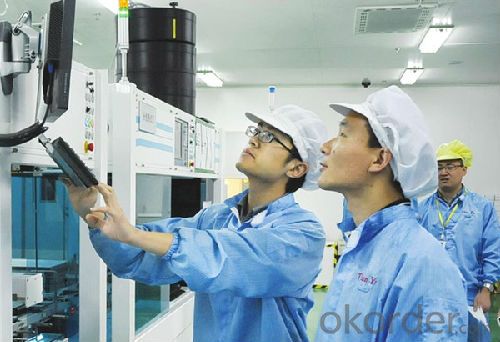
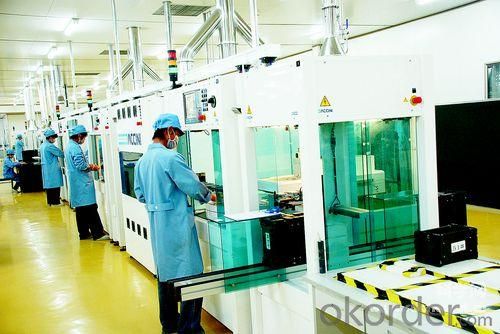
5. FAQ
Q1: How to deliver the solar cells?
Re: Carton Box Package and Deliver by air. It should be noticed that it should be avoid of water, sunshine and moisture.
Q2: What is the advantage of the Mono solar cells?
Re: Mono solar cells has higher efficiency and higher power, and long-term electrical stability.
- Q:Can solar cells be used in disaster relief or emergency response situations?
- Yes, solar cells can be used in disaster relief or emergency response situations. Solar cells provide a reliable and renewable source of energy that can be used to power critical devices and infrastructure such as communication systems, medical equipment, lighting, and water purification systems. They are easily deployable, independent of the electrical grid, and can operate in remote areas, making them ideal for emergency situations where access to traditional power sources may be disrupted.
- Q:Can solar cells generate power at night?
- No, solar cells cannot generate power at night as they rely on sunlight to produce electricity.
- Q:What is a polymer solar cell and how does it work?
- Polymer cells are actually a type of thin film solar cell,
- Q:Anybody ever heard of solar roll flexible solar panel?
- It could be a portable solar panel charges your digital camera, camcorder, GPS, and satellite phone. Expedition members no longer need to pack heavy batteries for their worldwide journeys.
- Q:Can solar cells be used in mountainous regions?
- Yes, solar cells can be used in mountainous regions. While mountainous regions may have varying weather conditions and shading from surrounding peaks, solar panels can still generate electricity from sunlight. However, the efficiency of solar cells may vary depending on factors like orientation, tilt angle, and the amount of direct sunlight received. It is crucial to carefully design and install solar systems in mountainous areas to optimize their performance and take advantage of the available sunlight.
- Q:What is the role of solar cells in powering remote surveillance systems?
- Solar cells play a crucial role in powering remote surveillance systems by harnessing the sun's energy and converting it into electricity. This renewable energy source allows surveillance systems to operate in remote locations without relying on traditional power grids or expensive fuel sources. Solar cells provide a sustainable and reliable power supply, ensuring continuous operation of surveillance equipment, including cameras, sensors, and communication devices, even in areas without access to electricity.
- Q:Can solar cells be used in underwater applications?
- Yes, solar cells can be used in underwater applications. However, special considerations need to be taken, such as using waterproof and corrosion-resistant materials, optimizing the design for low light conditions, and addressing the challenges of transmitting power and data underwater.
- Q:Can solar cells be used in aircraft applications?
- Yes, solar cells can be used in aircraft applications. They are commonly used in solar-powered aircraft to convert sunlight into electrical energy, which can then be used to power the aircraft's systems and/or charge its batteries. Solar cells can help reduce the reliance on fossil fuels, increase flight time, and contribute to more sustainable aviation.
- Q:How do monocrystalline solar cells differ from polycrystalline solar cells?
- Monocrystalline solar cells are made from a single crystal structure, which results in a uniform and continuous appearance. On the other hand, polycrystalline solar cells are made from multiple crystals, leading to a more fragmented and less uniform appearance. In terms of efficiency, monocrystalline solar cells tend to have higher efficiency rates due to their uniformity, while polycrystalline solar cells have slightly lower efficiency but are generally more cost-effective.
- Q:Can solar cells be used in public transportation?
- Yes, solar cells can be used in public transportation. They can be integrated into vehicles such as buses, trams, or trains to harness solar energy and power various onboard systems. Solar panels on the roof can generate electricity to charge batteries, power lighting and ventilation systems, or even propel the vehicle itself. This helps reduce reliance on traditional fuel sources and decreases carbon emissions, making public transportation more sustainable and environmentally friendly.
1. Manufacturer Overview |
|
|---|---|
| Location | |
| Year Established | |
| Annual Output Value | |
| Main Markets | |
| Company Certifications | |
2. Manufacturer Certificates |
|
|---|---|
| a) Certification Name | |
| Range | |
| Reference | |
| Validity Period | |
3. Manufacturer Capability |
|
|---|---|
| a)Trade Capacity | |
| Nearest Port | |
| Export Percentage | |
| No.of Employees in Trade Department | |
| Language Spoken: | |
| b)Factory Information | |
| Factory Size: | |
| No. of Production Lines | |
| Contract Manufacturing | |
| Product Price Range | |
Send your message to us
Monocrystalline Silicon Solar Cell Type CSUN-S156-3BB-88
- Loading Port:
- China Main Port
- Payment Terms:
- TT or LC
- Min Order Qty:
- 5000 pc
- Supply Capability:
- -
OKorder Service Pledge
OKorder Financial Service
Similar products
New products
Hot products
Hot Searches
Related keywords
